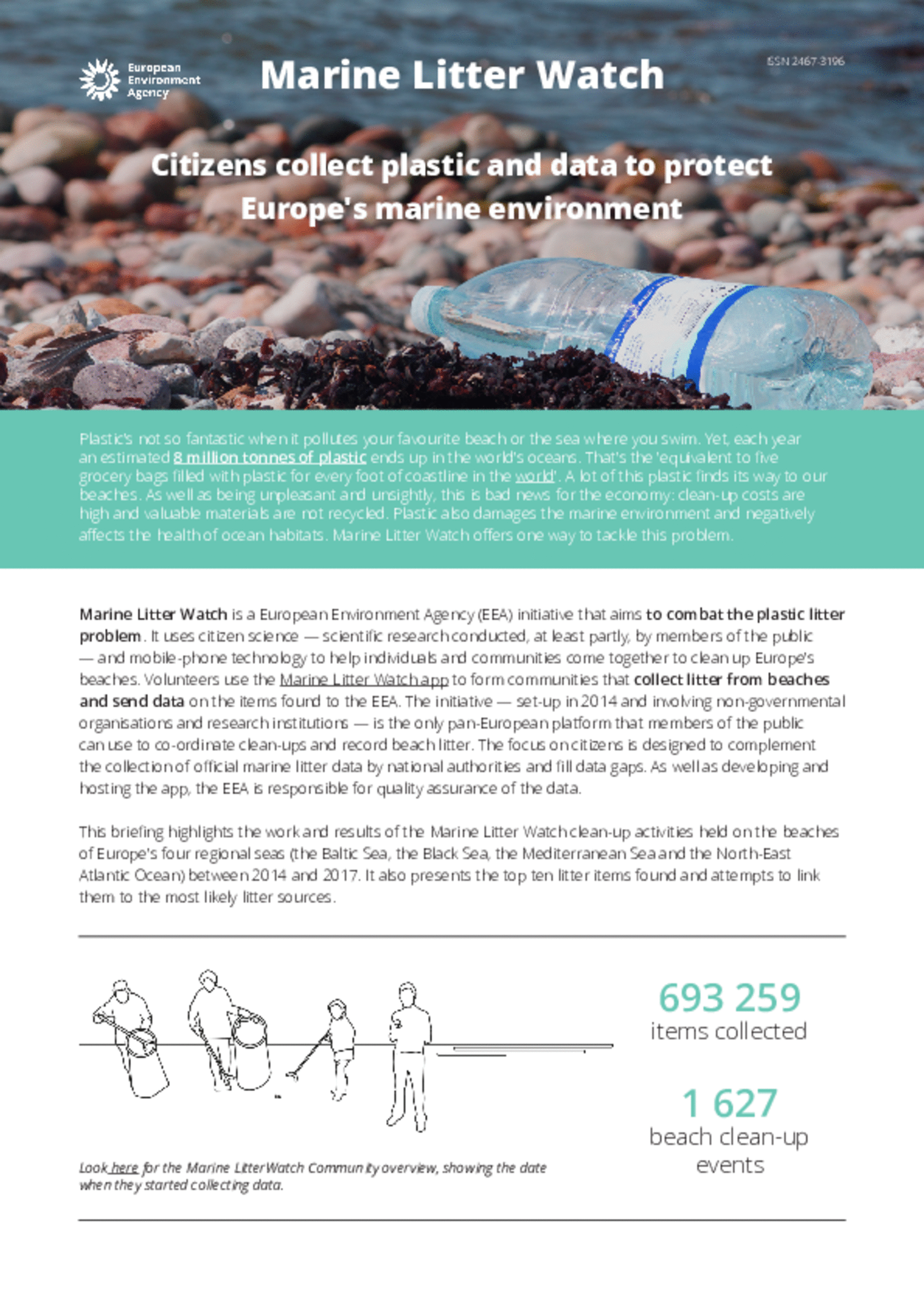All official European Union website addresses are in the europa.eu domain.
See all EU institutions and bodiesBriefing 5/2018
This briefing highlights the work and results of the Marine Litter Watch clean-up activities held on the beaches of Europe’s four regional seas (the Baltic Sea, the Black Sea, the Mediterranean Sea and the North-East Atlantic Ocean) between 2014 and 2017. It also presents the top ten litter items found and attempts to link them to the most likely litter sources.
ISBN: 978-92-9213-967-4

